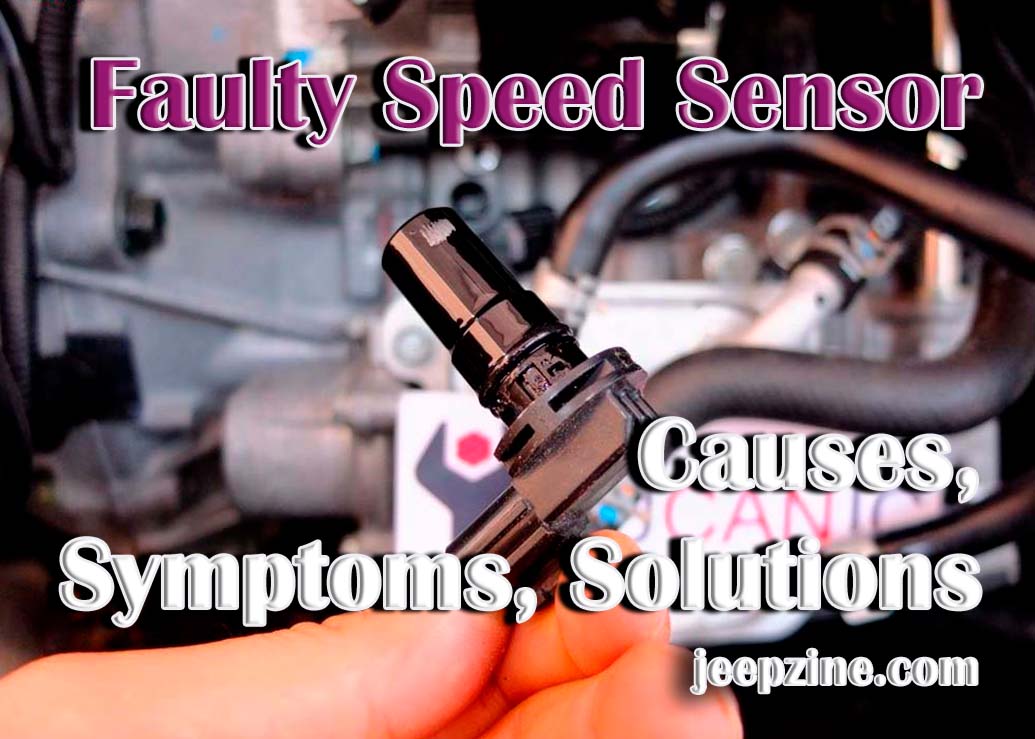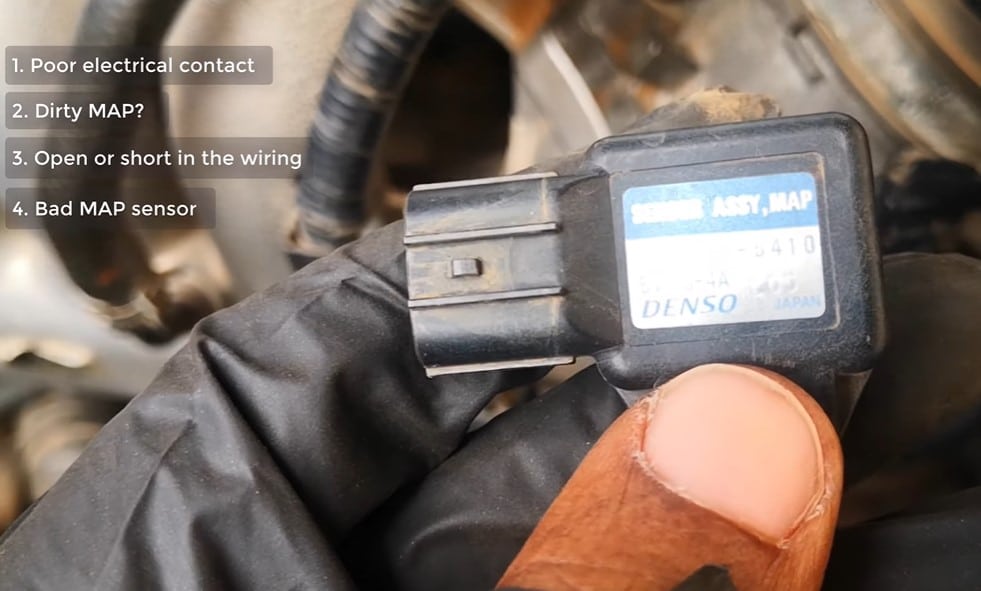Fantastic Tips About How Do I Know If My Transmission Sensor Is Bad

Faulty Speed Sensor Cause Transmission Issues At Sara Mccall Blog
Is Your Car Acting Up? Could a Bad Transmission Sensor Be the Culprit?
1. Decoding the Signals
Let's face it, car troubles are never fun. One minute you're cruising down the road, singing along to your favorite tunes, and the next, your vehicle is throwing a fit. If your car is behaving strangely, particularly with shifting gears, a bad transmission sensor might be to blame. But how do you know for sure? Let's dive into the telltale signs.
Think of your transmission sensors as the messengers within your car's intricate network. They relay vital information about speed and gear selection to the engine control unit (ECU), which then makes adjustments to keep everything running smoothly. When these sensors start to malfunction, things can get a little chaotic. It's like having a translator who suddenly starts speaking gibberish; the message gets lost, and the system gets confused.
One of the most common signs is erratic shifting. Have you noticed your car struggling to find the right gear, or perhaps shifting at odd times? Maybe it's even refusing to shift at all? These are all red flags that something might be amiss with your transmission sensor. It's kind of like your car is forgetting how to dance to the engine's rhythm.
Another potential symptom is a check engine light illuminating your dashboard. While the check engine light can indicate a multitude of issues, a faulty transmission sensor is definitely a contender. Its always a good idea to get the codes read at an auto parts store or a trusted mechanic to pinpoint the problem accurately. Consider it a cryptic message from your car saying, "Hey, something's not quite right!"

Faulty Speed Sensor Causes And Troubleshooting
Unmasking the Symptoms
2. Experiencing the Trouble Firsthand
Beyond the general symptoms, there are some specific experiences you might encounter if your transmission sensor is on the fritz. For example, you might notice a decrease in fuel efficiency. If your car isn't shifting properly, it can waste fuel as the engine works harder than necessary. It's like trying to run a marathon in flip-flops not very efficient, right?
You might also experience rough idling or stalling. This can happen because the ECU isn't receiving accurate information about the engine's speed and load. The engine might struggle to maintain a stable idle, causing it to sputter or even stall completely. Imagine trying to balance on a tightrope while someone keeps nudging you; eventually, you're going to fall.
Furthermore, keep an eye (and ear!) out for harsh or delayed shifts. If your car is jerking or hesitating when shifting gears, it's a clear indication that something is amiss. It should feel smooth and seamless, not like a mechanical bull ride. The smoothness of the transmission operation should be similar to the shifting of gears in a bicycle with a properly adjusted chain and derailleur.
Finally, in some cases, you might even experience a complete transmission failure. This is a worst-case scenario, but it can happen if a faulty sensor is left unaddressed for too long. The transmission relies on accurate sensor data to function correctly, and without it, the entire system can grind to a halt. Prevention is always better than cure, so dont ignore the warning signs.

Bad Map Sensor Symptoms Duramax At Sammy Romano Blog
Delving Deeper
3. Understanding the Players
To truly understand what's happening, it's helpful to know that there are different types of transmission sensors, each playing a specific role. The most common ones are the input speed sensor and the output speed sensor. The input speed sensor monitors the speed of the transmission's input shaft, which is connected to the engine. The output speed sensor, on the other hand, monitors the speed of the output shaft, which is connected to the wheels. Each sensor's data is key to smooth transmission operation.
These sensors work together to provide the ECU with a complete picture of the transmission's activity. By comparing the input and output speeds, the ECU can determine the gear ratio and make necessary adjustments to ensure smooth and efficient shifting. It's like having two eyes working together to give you depth perception; each sensor provides a different perspective, and the ECU combines them to create a complete image.
Other types of transmission sensors include temperature sensors, which monitor the temperature of the transmission fluid, and pressure sensors, which measure the pressure within the transmission. These sensors provide additional information to the ECU, allowing it to fine-tune the transmission's performance and protect it from damage. If it gets too hot for transmission fluid, the ECU can trigger protective action.
The specific types of sensors in your car can vary depending on the make and model. However, the basic principle remains the same: these sensors are essential for providing the ECU with the information it needs to control the transmission effectively. A properly functioning transmission relies on accurate data from all of its sensors working in harmony.

Diagnosing the Issue
4. Taking Action
So, you suspect you have a bad transmission sensor. What should you do next? First, don't panic! While it's important to address the issue promptly, it's not necessarily a crisis. Start by getting the error codes read. Most auto parts stores will do this for free. Knowing the specific codes can help you pinpoint the problem sensor.
Once you have the codes, you can try to do some basic troubleshooting yourself. Check the wiring and connectors leading to the sensor. Make sure they're clean, secure, and free from damage. Sometimes, a loose connection or corroded wire can cause a sensor to malfunction. Its like checking if a lamp is plugged in before assuming the bulb is burned out.
If the wiring looks okay, you can try replacing the sensor yourself. Transmission sensors are relatively inexpensive, and replacing them is often a straightforward process. However, it's important to be careful and follow the instructions in your car's repair manual. If you're not comfortable working on your car, it's always best to take it to a qualified mechanic.
Finally, remember that diagnosing transmission problems can be tricky. Even with the error codes and basic troubleshooting, it can be difficult to pinpoint the exact cause of the issue. If you're unsure, it's always best to consult with a professional mechanic. They have the tools and expertise to diagnose the problem accurately and recommend the appropriate repairs.

Symptoms Of A Bad Transfer Case Speed Sensor At Tammy Moran Blog
Prevention and Maintenance
5. Proactive Measures
While sometimes sensor failure is unavoidable, there are steps you can take to keep your transmission running smoothly and potentially avoid sensor problems down the road. Regular maintenance is key! This includes changing your transmission fluid according to the manufacturer's recommendations. Clean fluid helps to keep the transmission components lubricated and prevents wear and tear. Think of it as giving your transmission a refreshing spa day.
Avoid harsh driving habits, such as aggressive acceleration and sudden braking. These habits can put unnecessary stress on the transmission and accelerate wear and tear. Smooth and steady driving is always better for your car's long-term health. Drive as if you're trying to protect a carton of eggs in the back seat, not like you're auditioning for a Fast & Furious movie.
Be mindful of towing capacity. Overloading your vehicle can put a strain on the transmission and lead to overheating. Always adhere to the manufacturer's recommended towing capacity and use the appropriate towing equipment. Know your vehicle limits so you don't overextend it.
Finally, pay attention to any unusual noises or vibrations coming from your car. These could be early warning signs of transmission problems. The sooner you address these issues, the less likely they are to escalate into major repairs. Early detection is a key tool to use.

How Do You Know If Your Map Sensor Is Bad
FAQ
6. Frequently Asked Questions
Here are some frequently asked questions to help clarify any remaining doubts you might have about transmission sensors.
Q: Can I drive with a bad transmission sensor?
A: It's generally not recommended. While you might be able to drive for a short period, it can cause further damage to the transmission. It's best to get it checked out as soon as possible.
Q: How much does it cost to replace a transmission sensor?
A: The cost can vary depending on the make and model of your car, but typically it ranges from $100 to $300, including parts and labor.
Q: Are there any specific brands of transmission sensors that are more reliable?
A: It's generally best to use OEM (Original Equipment Manufacturer) sensors or reputable aftermarket brands known for their quality and reliability. Research is your friend.